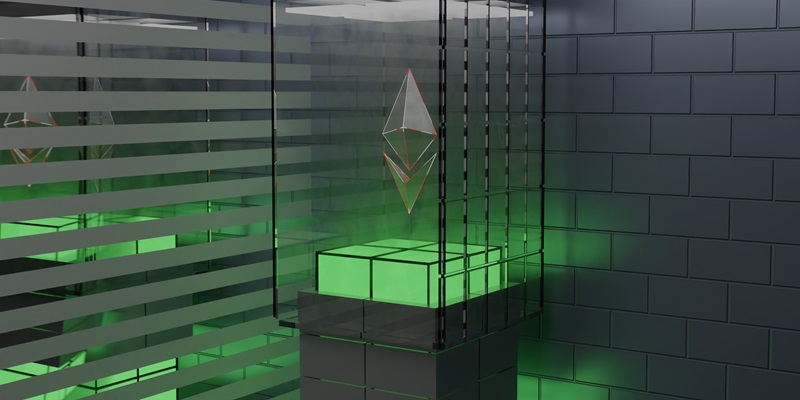Blockchain technology continues to evolve and expand, with various platforms exploring ways to improve scalability, accessibility, and cost-effectiveness. Lisk (LISK), an open-source blockchain network and platform for decentralized applications (dApps), has recently announced its decision to join the Ethereum ecosystem as a layer 2 (L2) platform. This strategic move aims to leverage the market share and benefits of Ethereum while also providing developers and users with enhanced capabilities and opportunities.
Building the Ecosystem on Gelato and Optimism
Lisk is building its upcoming ecosystem on Gelato’s Rollup and powering it via Optimism’s OP Stack. Gelato’s Rollup offers scalability solutions by aggregating multiple transactions into a single batch, reducing congestion and lowering fees. Optimism’s OP Stack utilizes optimistic rollups, a layer 2 scaling technology, to enable faster and cheaper transactions while maintaining the security and trust of the Ethereum network.
Exploring Solutions for Market Share Leverage
One of the key drivers behind Lisk’s decision to join the Ethereum ecosystem is the fact that more than 90% of transaction fees users spend on layer 1 (L1) chains are captured within the Ethereum network. This signifies the strong market presence and dominance of Ethereum in the blockchain space. Recognizing this, Lisk sought solutions to leverage Ethereum’s market share and enhance its own capabilities by becoming a part of the Ethereum ecosystem.
Collaboration with Base and Optimism
As part of this strategic move, Lisk will collaborate with Base and Optimism as an early member of Optimism’s Superchain. This collaboration aims to build better infrastructure for the adoption of Web3 and further strengthen the integration of Lisk within the Ethereum ecosystem. By joining the Superchain, Lisk will not only be able to interact with applications on Optimism but also seamlessly connect with Base and other Layer 2 platforms, enabling more extensive and efficient dApp development.
Deployment and Transition Timeline
The Lisk Foundation has laid out a comprehensive timeline for the transition to the Ethereum ecosystem. The plan includes deploying the L2 testnet in Q1 2024 and subsequently launching the mainnet. This timeline provides ample time for development, testing, and refining the infrastructure to ensure a smooth transition and optimal user experience.
Benefits of the Move
The decision to join the Ethereum ecosystem comes with several significant benefits for Lisk developers and users. Firstly, developers will enjoy a considerable reduction in fees, with costs being up to 90% cheaper on the L2 platform compared to traditional Ethereum transactions on the L1. This affordability factor will likely attract more developers to utilize the Lisk platform and contribute to the growth of the ecosystem.
Additionally, by aligning with Ethereum’s EVM compatibility, Lisk developers gain access to a wider range of tools and resources for dApp building. This compatibility allows seamless integration of existing EVM-based applications on Lisk’s L2 platform, eliminating the need for extensive modifications or redevelopment and ensuring a smooth transition for existing Ethereum projects.
Enhanced Liquidity and Interoperability
The move to Ethereum’s Layer 2 platform also offers Lisk users increased liquidity across thousands of tokens. With the ability to transfer any ERC-20 token to and from Lisk’s L2, users will have greater flexibility and accessibility when it comes to managing their digital assets within the broader Ethereum ecosystem. Moreover, joining the Superchain allows users to interact with applications on various Layer 2 platforms, including Optimism, Lisk, Base, and more. This interoperability ensures a seamless user experience, fostering collaboration, innovation, and growth within the larger Ethereum ecosystem.
Transition to Community-Driven Development
In conjunction with the move to the Ethereum ecosystem, the Lisk Foundation has decided to transition Lisk Layer 1 into a community-driven project. Under a new brand and name, the Lisk community team will take over its development while receiving support from the Lisk Foundation during the transition. This shift aims to foster decentralization, community engagement, and inclusivity, ensuring the long-term sustainability and growth of the project.
By joining the Ethereum ecosystem as a Layer 2 platform, Lisk (LISK) aims to capitalize on Ethereum’s market dominance, benefiting from its scale, liquidity, and rich developer community. The strategic collaboration with Base and Optimism, as well as the deployment of Gelato’s Rollup and Optimism’s OP Stack, will contribute to the development of a robust and accessible ecosystem for decentralized applications. With reduced fees, enhanced dApp building tools, increased liquidity, and interoperability, Lisk is poised to offer developers and users a compelling proposition in the rapidly evolving blockchain landscape.

